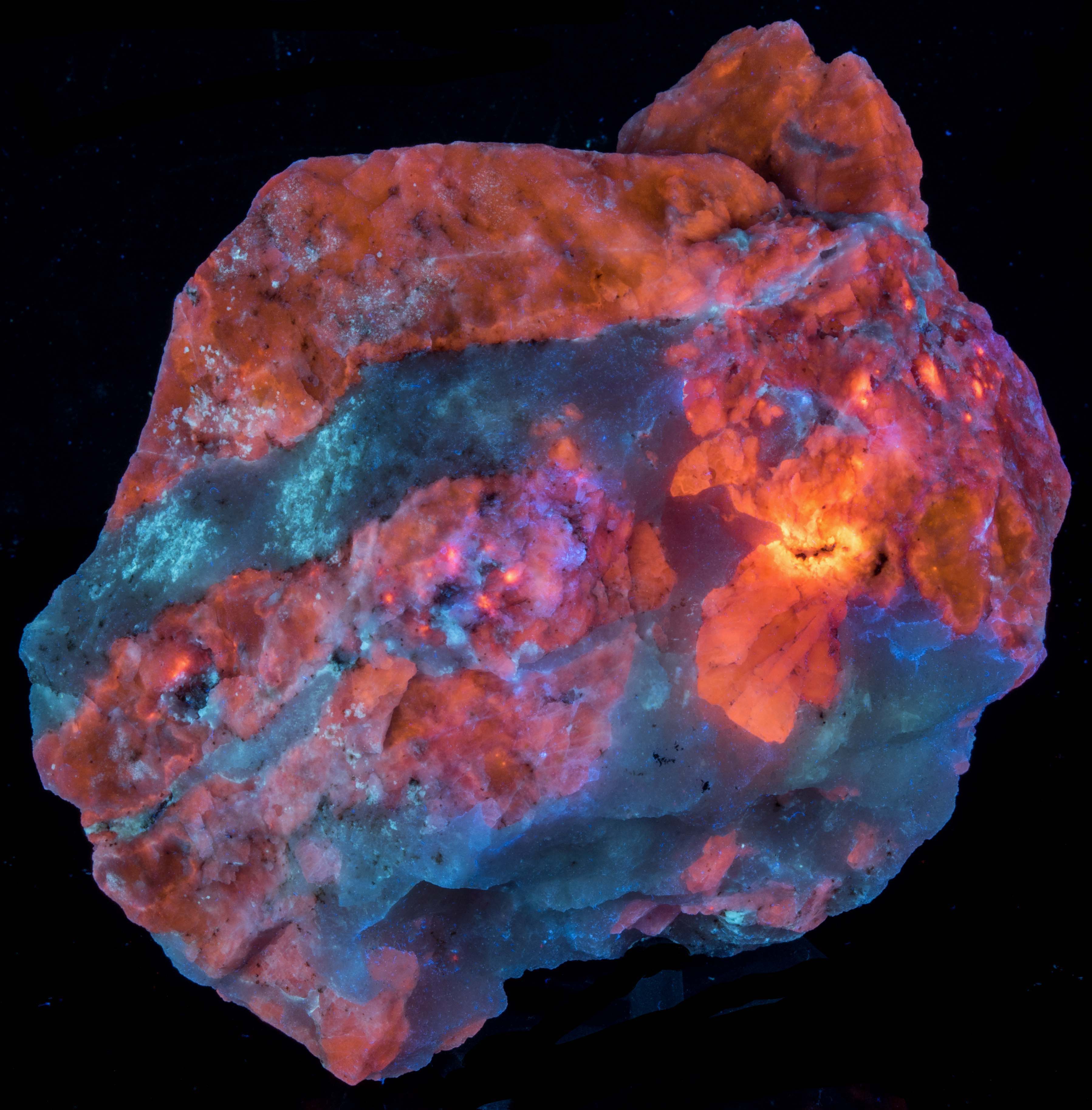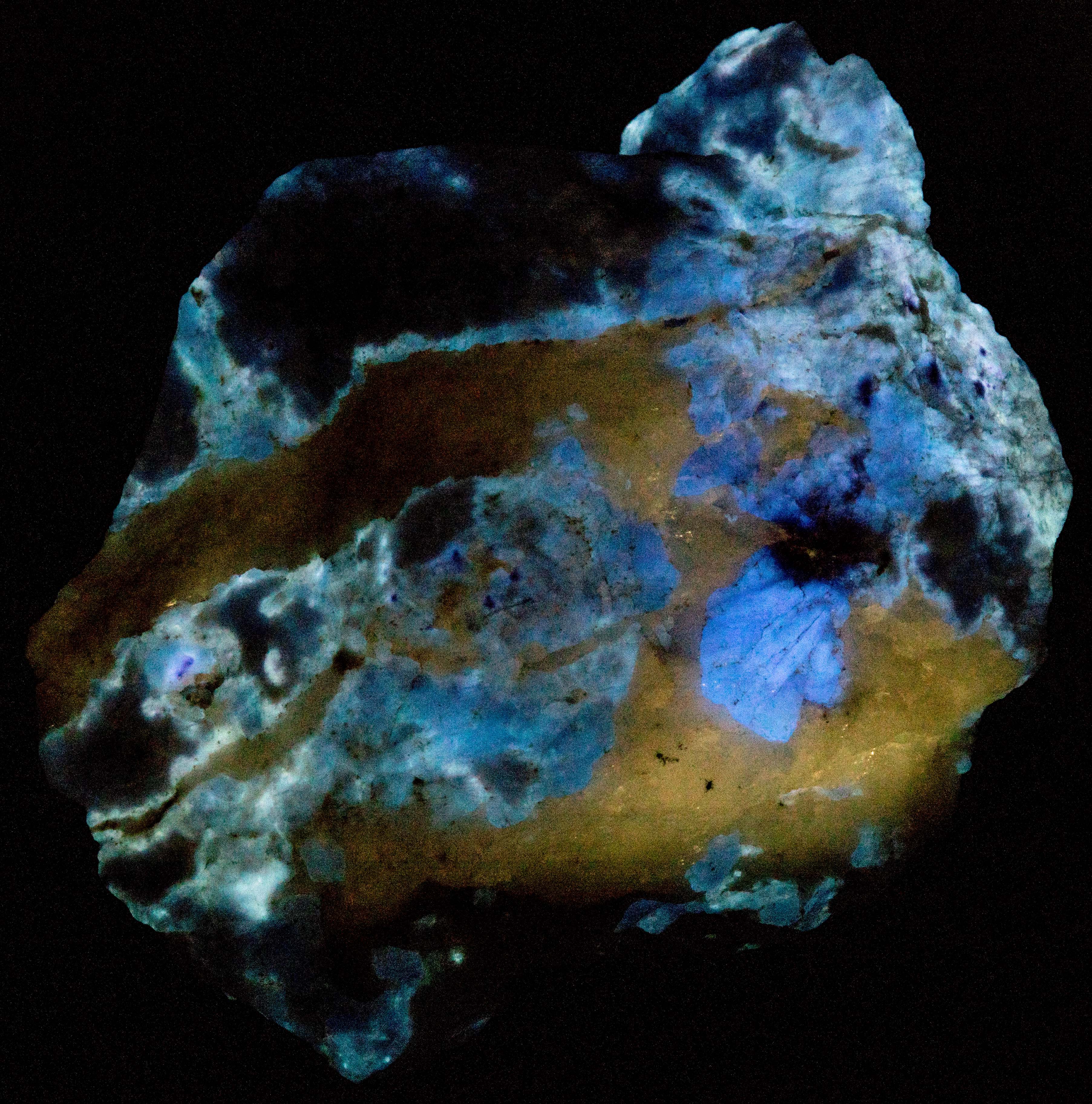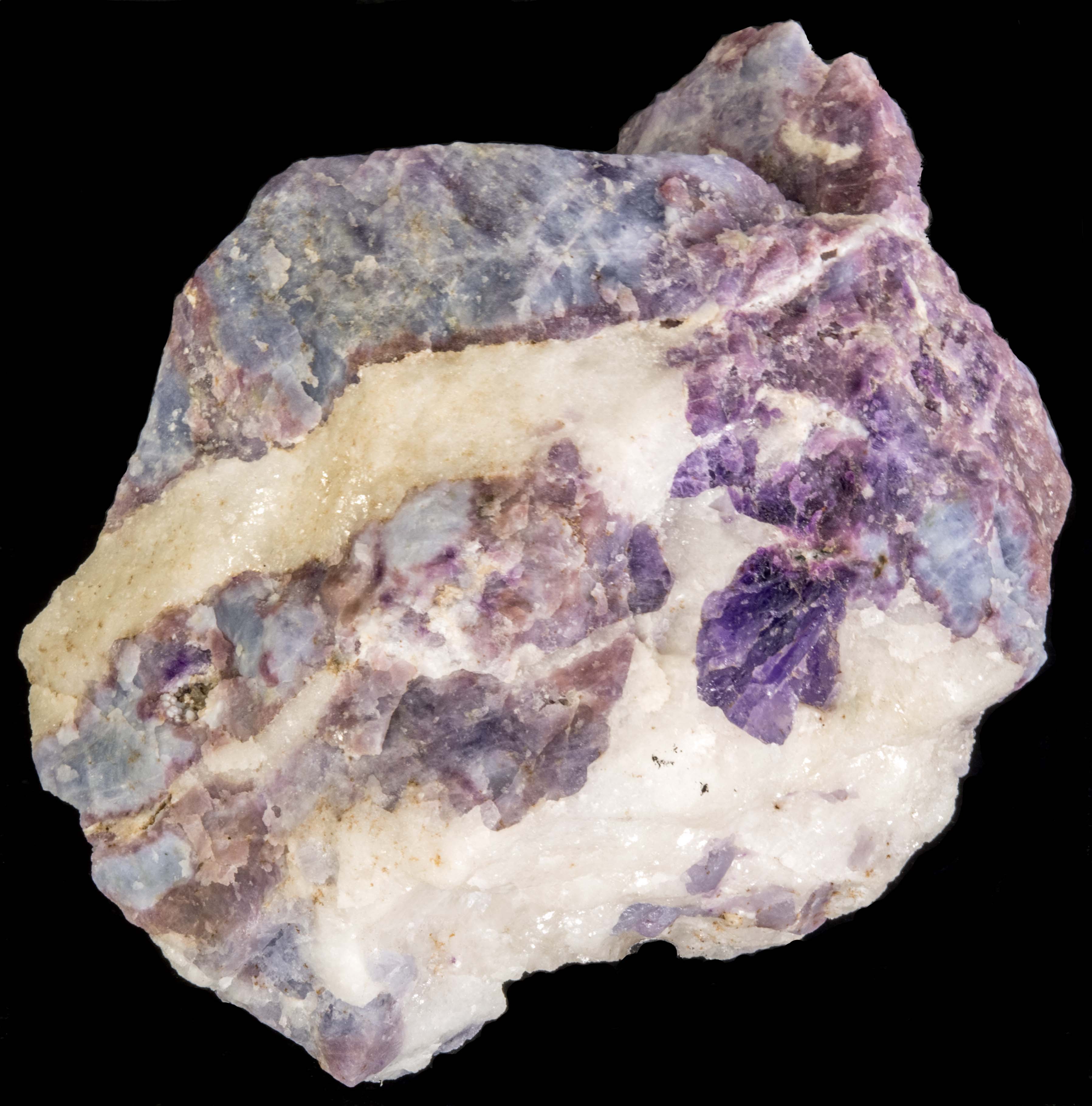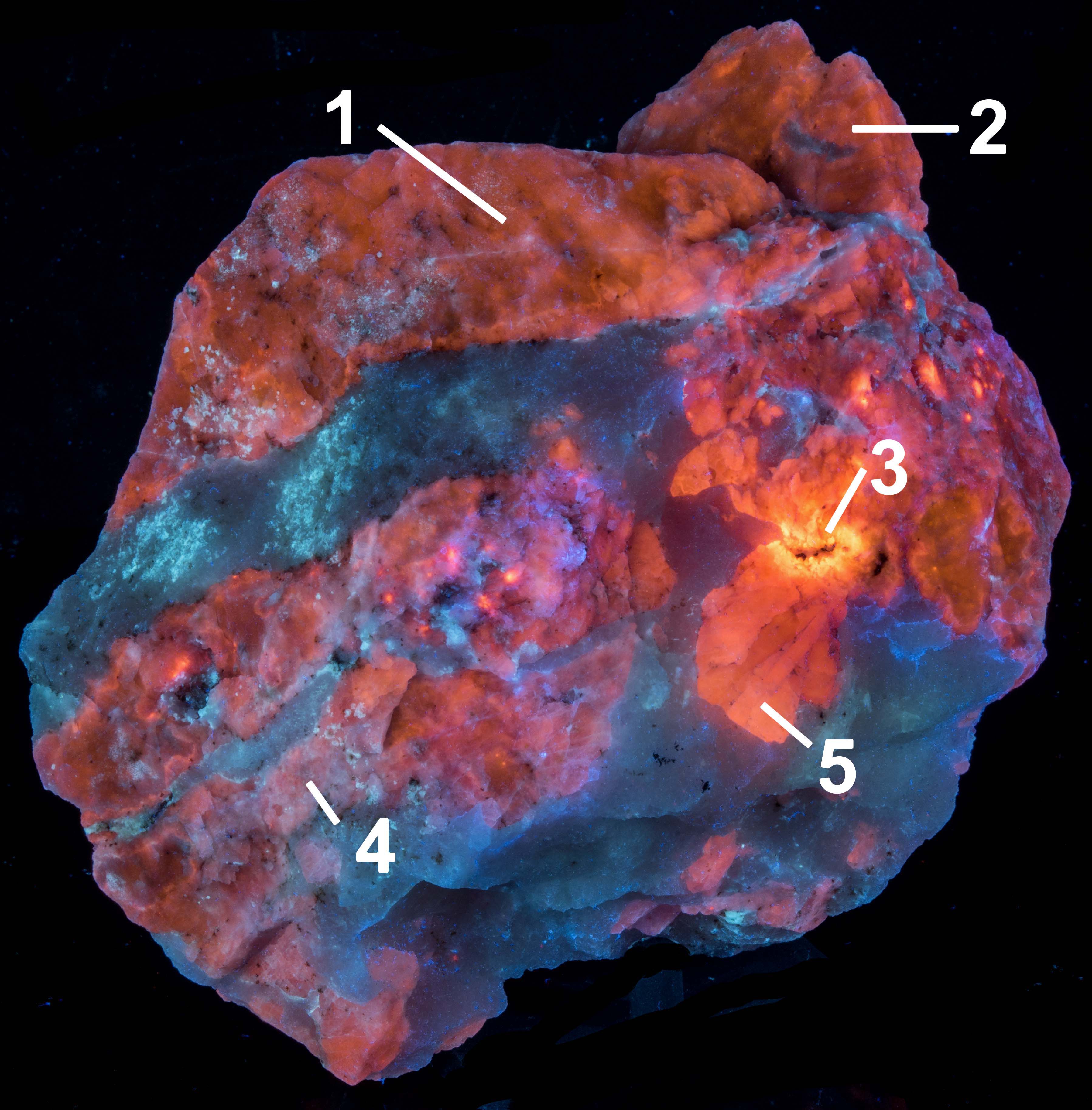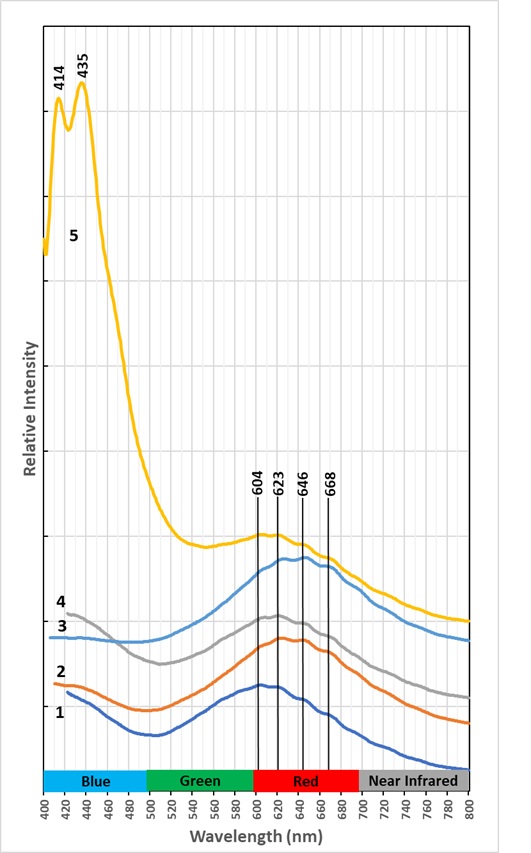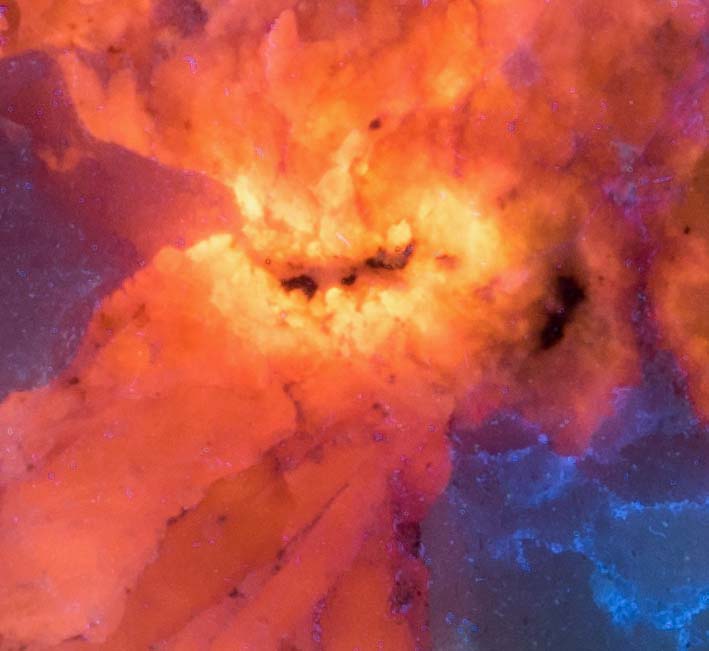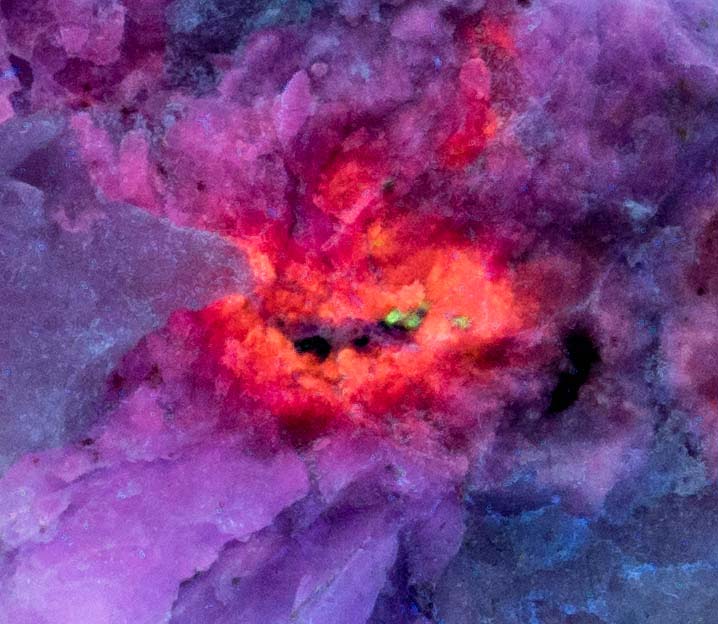Sodalite Breccia from Sar-e-Sang, Badakhshan Province, Afghanistan
Contributed by: Michael Crawford
Date: Aug 18th, 2025
Locality: Sar-e-Sang, Kuran wa Munjan District, Badakhshan, Afghanistan (See on Mindat)
Size: 13 x 15 cm
Description:
This is a sodalite (Na4(Si3Al3)O12Cl) specimen from Sar-e-Sang, Badakhshan, Afghanistan. The sodalite in the specimen has been brecciated and the voids were filled with white dolomite (CaMg(CO3)2). The dolomite identification is from XRD analysis. The dolomite also contains grains of light brown titanite (CaTi(SiO4)O).
The emplacement of the dolomite-titanite modified the visible and fluorescent properties of the sodalite. The original sodalite has a blue color. The fluids that deposited the dolomite and titanite altered the sodalite to a violet color. Several of blue sodalite clasts have a reaction rim of violet sodalite where they are in contact with the dolomite. Additionally, longwave UV fluorescent response of the altered sodalite is slightly different. The peak fluorescent response is shifted to longer wavelengths (604 nm to 623 nm). Spectrum #1 shows the longwave emission of unaltered sodalite. Spectrum #2 is the altered sodalite. The yellow-orange longwave fluorescence is activated by disulfide replacing chlorine in the sodalite cage. The disulfide causes small vibronic peaks that are superimposed on the broad peak. The shift to longer wavelength may be caused by ferric iron replacing aluminum.
The altered sodalite also became phosphorescent and tenebrescent. Titanium from the dolomite fluids penetrated the sodalite clasts and is the likely activator for the phosphorescence. Titanium replaced some of the aluminum. The reaction rims are clearly seen in the phosphorescent image after exposure to shortwave UV light. The emplacement of the dolomite also changed the crystal structure of the sodalite. Chlorine in the sodalite cage was removed leaving an empty space. When exposed to UV light, an electron from an adjacent cage containing a disulfide ion moves to the empty space. The electron in the sodalite cage forms an F-center that is responsible for the sodalite tenebrescence. When exposed to white light, the F-center absorbs green wavelengths of light and reflect blue and red wavelengths making the purple color of tenebrescence. Over time, the electron returns to the disulfide ion and the tenebrescence fades.
There is a second type of alteration of the sodalite. The second alteration is due to radiation damage. The alteration appears as a bright yellow-orange 1 cm spot in the longwave UV image and a red-orange spot in the shortwave UV image. The radiation alteration occurred after the first alteration. In addition to changing the fluorescent response, the sodalite is no longer phosphorescent in the altered area. Closeup images show the radiation alteration. At the center of the alteration are black grains of uraninite (UO2). The uraninite was emplaced with the dolomite. There are also grains of a shortwave UV green fluorescent uranium mineral along with the uraninite. Total radioactivity of the altered area is 265 cpm compared to background of 24 cpm on other parts of the specimen.
Summary of luminescence responses:
Sodalite (Mindat) (RRUFF)
- Fluorescence under Longwave (365nm LED) UV light: Orange
- Fluorescence under Shortwave (255nm LED) UV light: White
- Afterglow after exposure to Shortwave (255nm LED) UV light: White
- Tenebrescence after exposure to Shortwave (255nm LED) UV light: Purple

